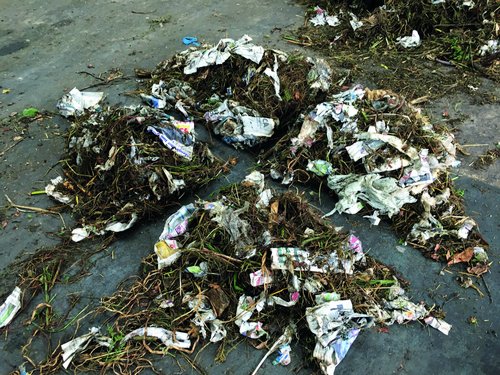Sorting analysis of biowaste in Augsburg

The increasingly stringent limit values of the Fertiliser Ordinance (Düngemittelverordnung) provide for continued further reduction in foreign constituents in compost fertiliser in relation to dry mass. The foreign constituents include wastepaper, cardboard, glass, metal, thermoplastics and other plastics larger than 2 mm particle size. The other plastics prove to be particularly problematic, as their share of biowaste is increasing and completely ejecting them constitutes a challenge for existing treatment technology. These plastics included, for example, films and bags, as well as those made of biologically degradable materials (BAW) insofar as they were not degraded. To fulfil the legal requirements, it is imperative to remove the foreign substances. This is done on the one hand by preparing the biowaste delivered in a star screen and on the other by screening during the aftertreatment of the finished compost. The interfering and foreign substances sorted out during preparation of the biowaste are disposed of at the cost of Augsburg’s waste management authority (Abfallzweckverband Augsburg – AZV).
Biowaste is a valuable raw material, when it comes to the provision of organic fertiliser, the recovery of plant nutrients and the substitution of peat. At the same time, it is important that the compost from biowaste used meets all the quality standards of the sales market. Increased foreign substance levels prevent use of biowaste compost as a soil improving product.
In a broad-based sorting analysis, we examined the biowaste for interfering and foreign substance levels on behalf of the AZV Augsburg and AVA Abfallverwertung Augsburg KU. In total, more than 80 random samples from the whole AZV area were taken in four seasonal campaigns at different vegetation and weather phases and were analysed separately. A representative selection took place according to statistical aspects to enable reliable and meaningful extrapolation. Uniform distribution of individual samples during the course of the year ensures that seasonal effects are completely represented. Due to the size of the examined biowaste quantity and large number of individual samples, very good representativity will be achieved.
The constituents of the biowaste are sorted into more than 22 categories in the sorting analysis. In addition to plastics and metals, here the focus is also on other foreign materials such as textile and hygiene products and nappies.
You want more information?
You are welcome to contact me:
Thorsten Pitschke
tpitschke@bifa.de
![[Translate to Englisch:] Placeholder](/fileadmin/_processed_/e/b/csm_Header_Projekte_603d83e502.jpg)